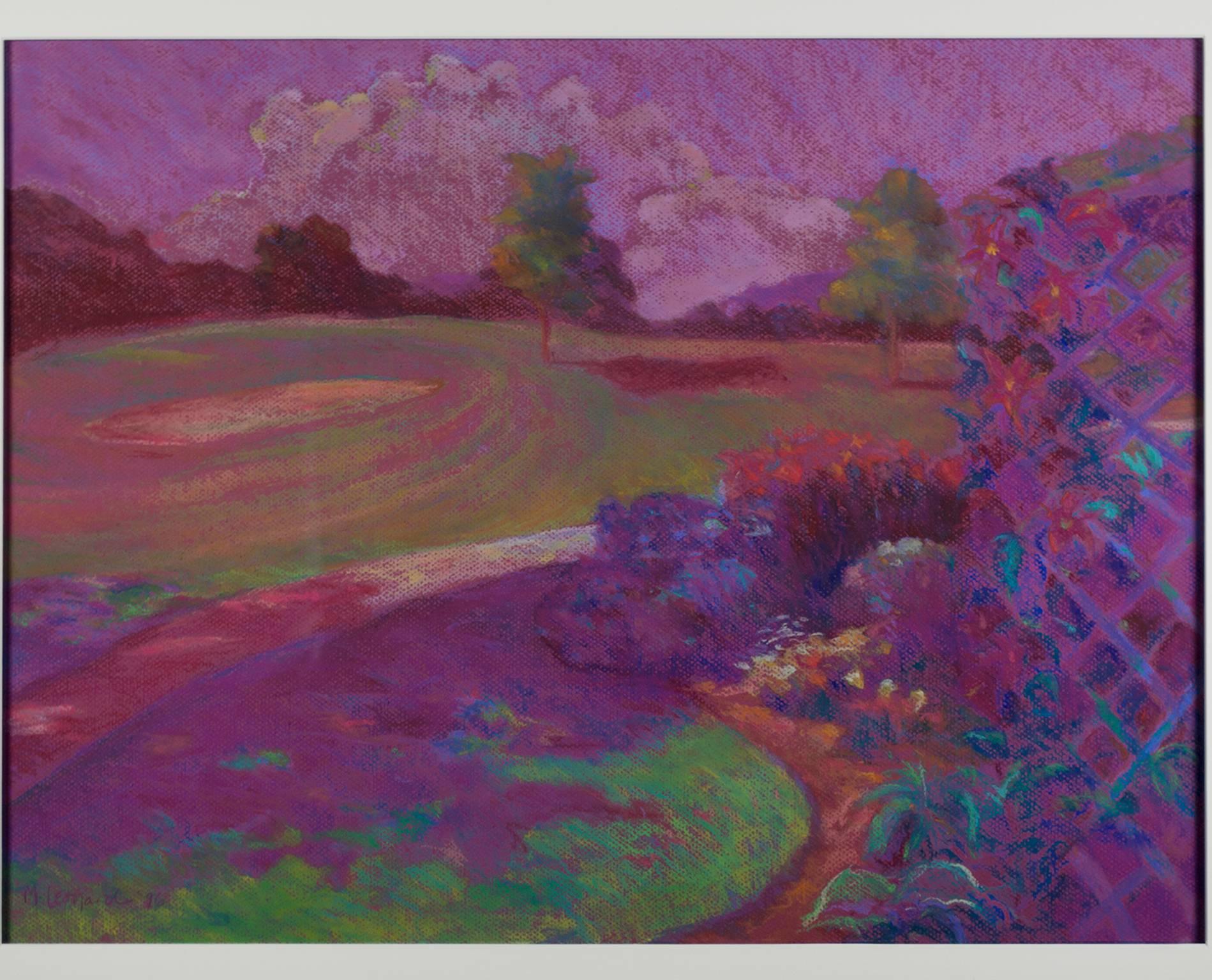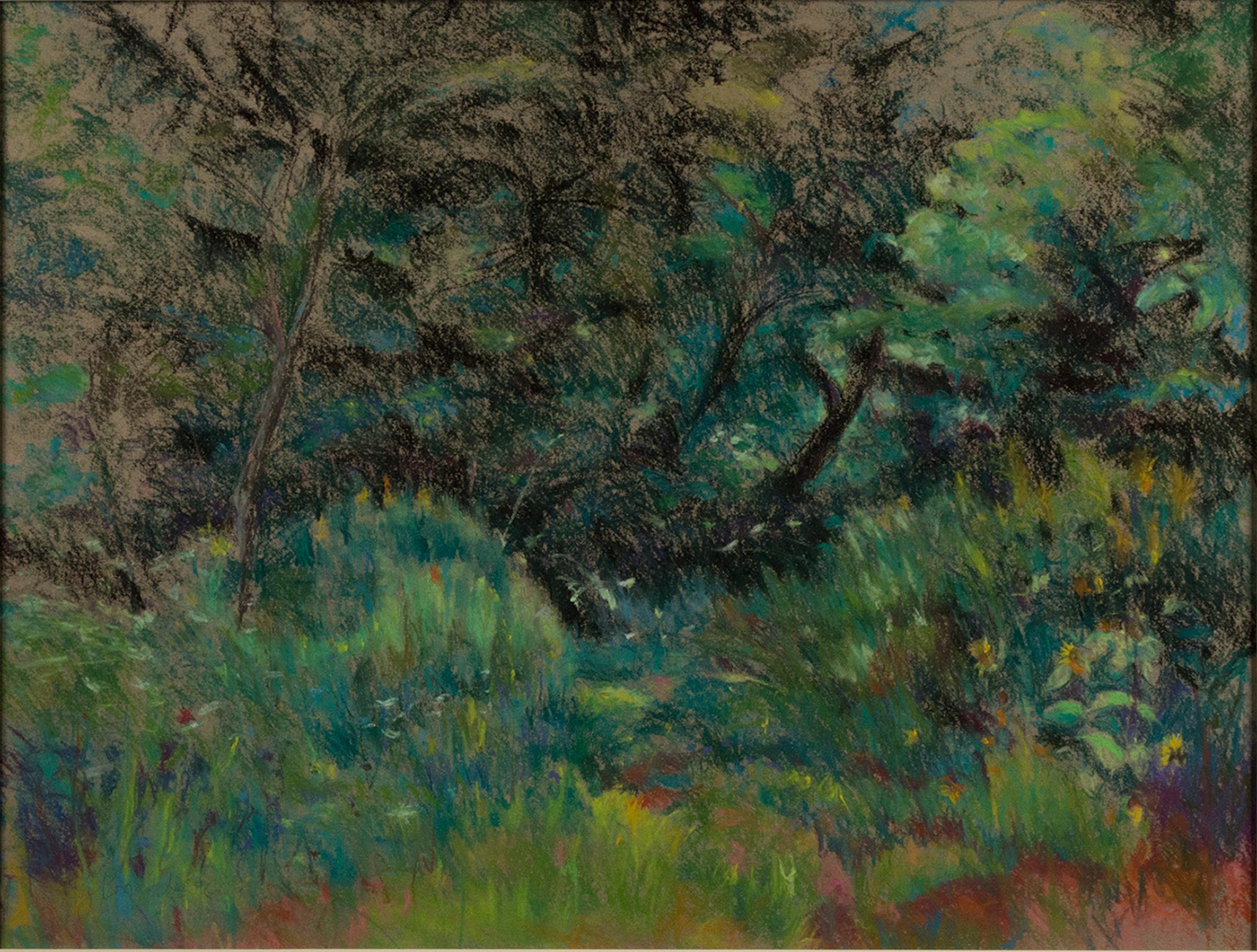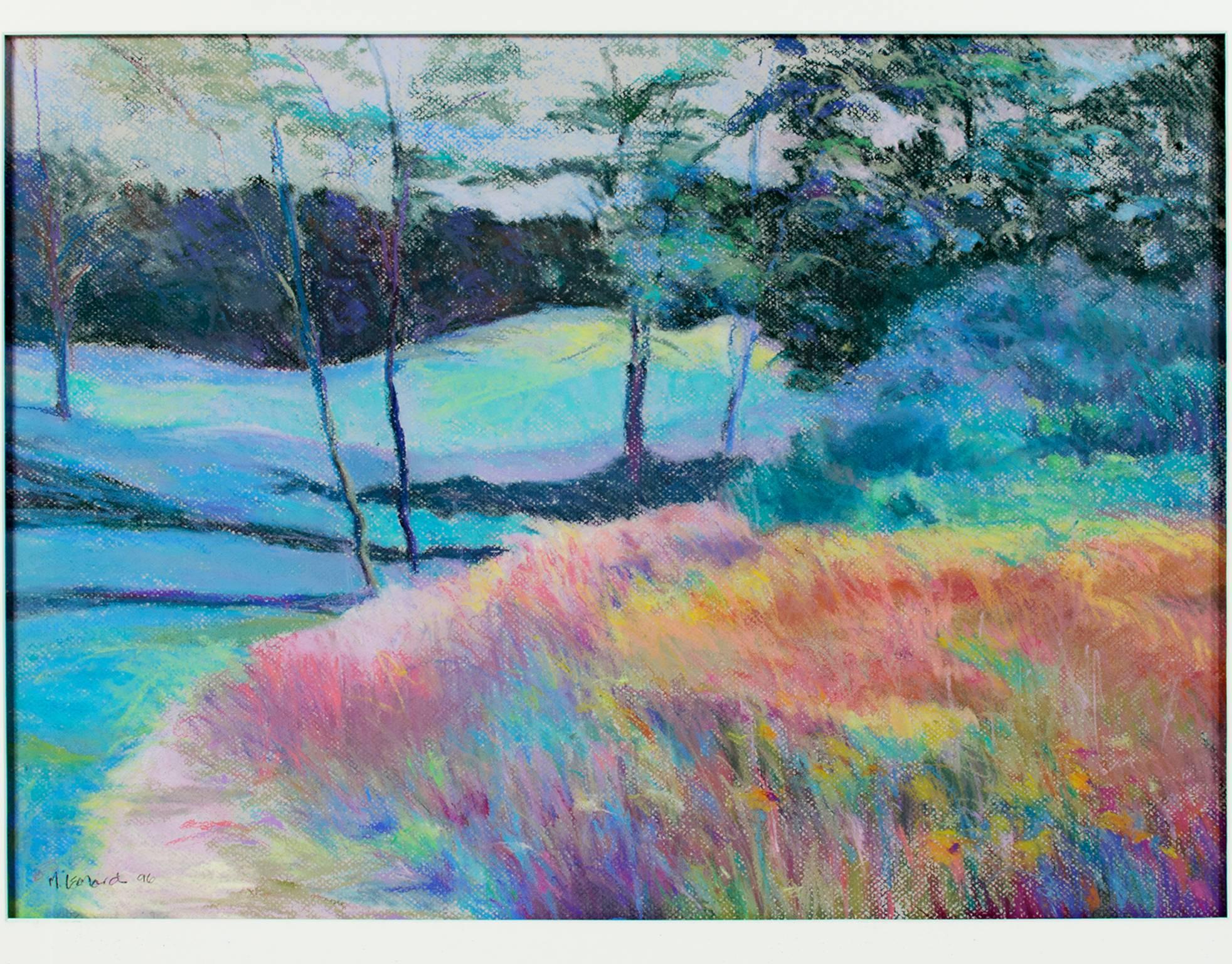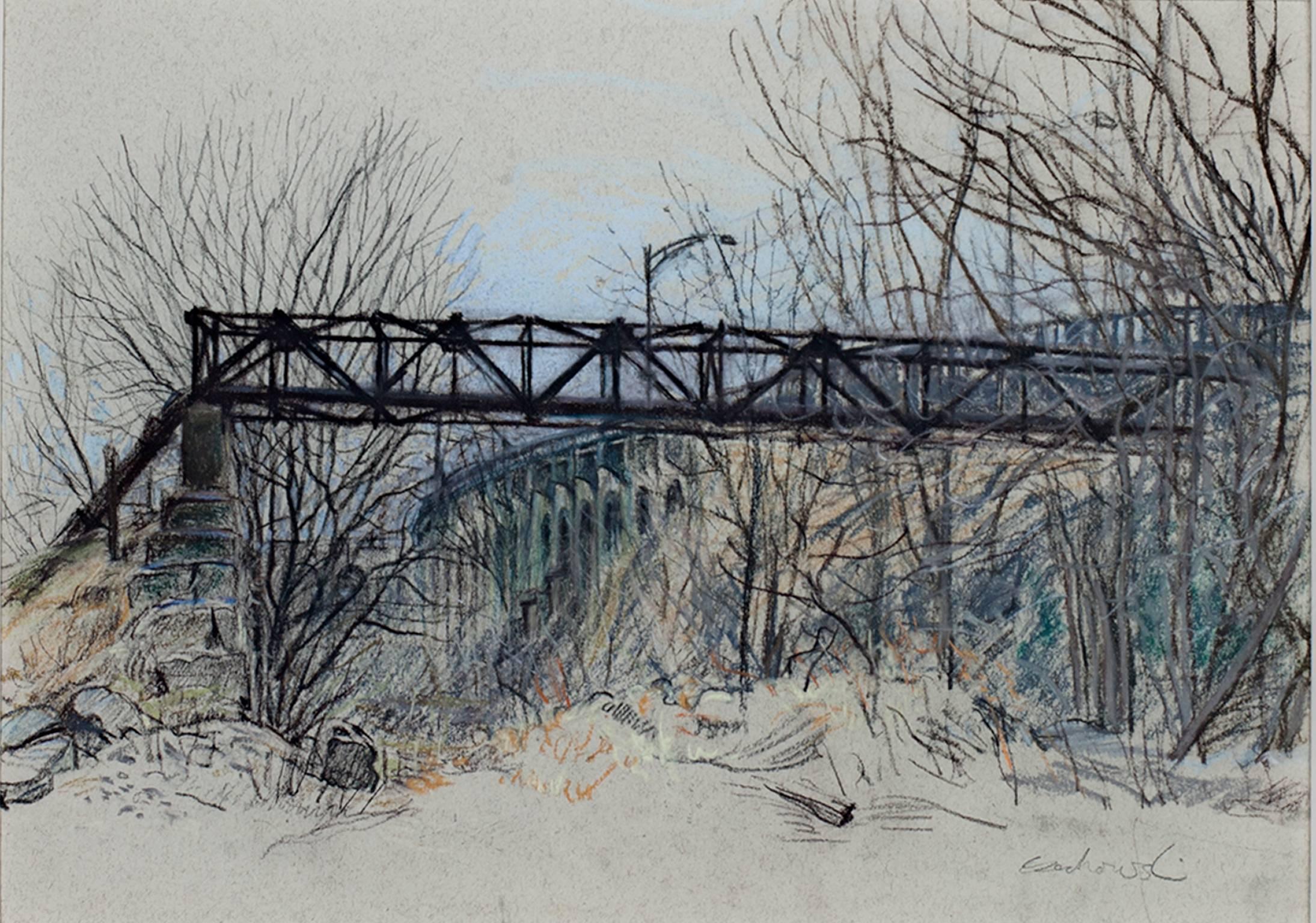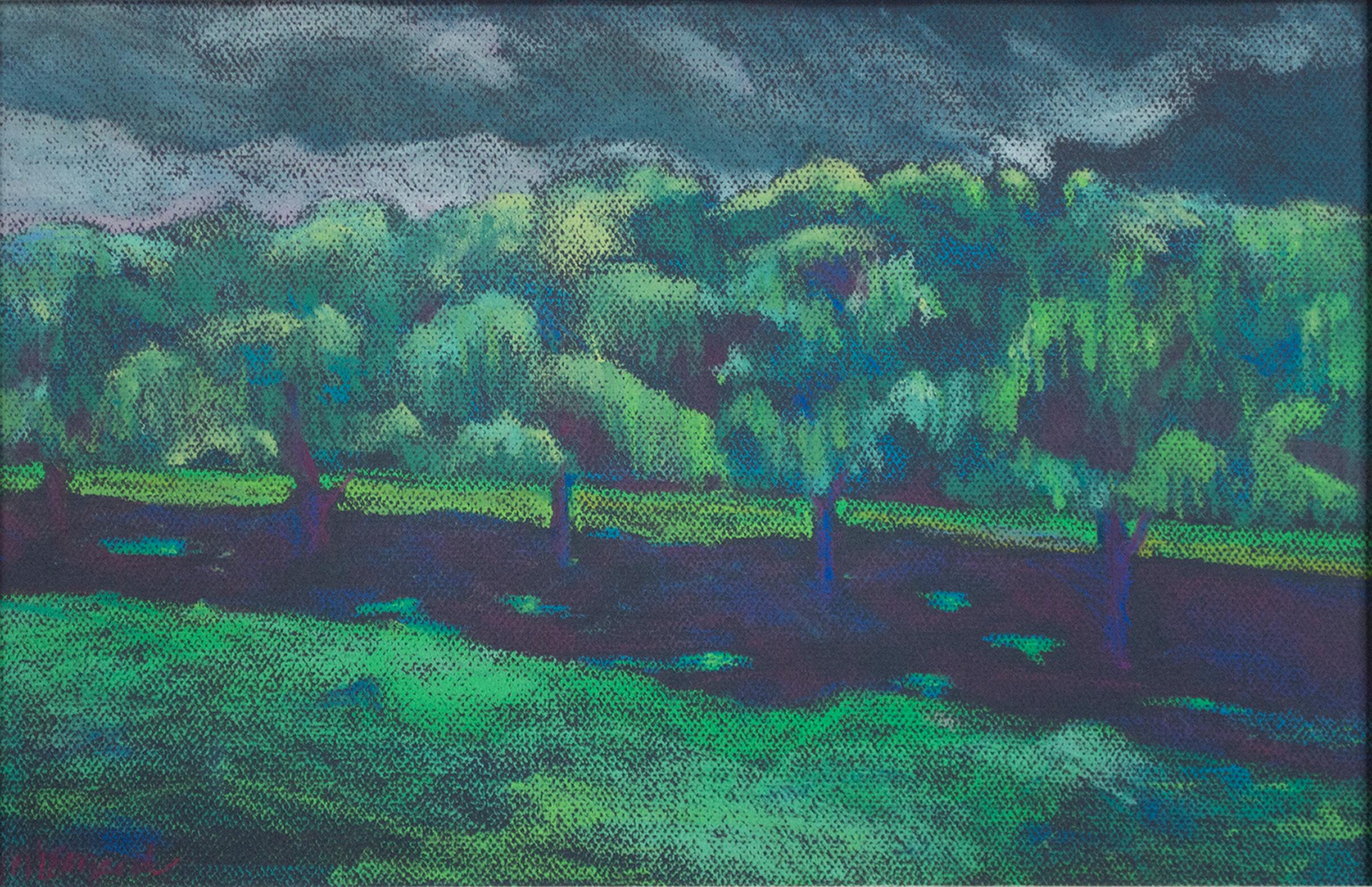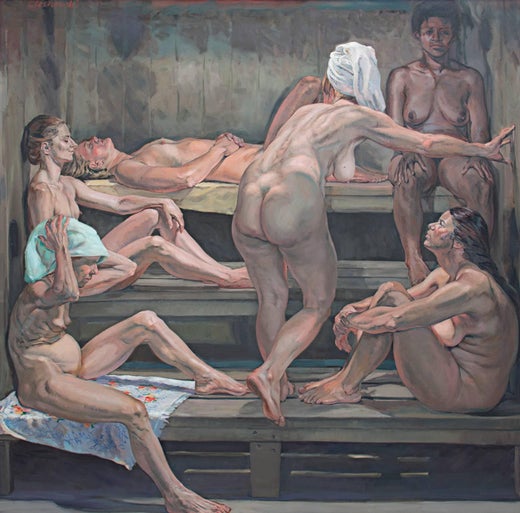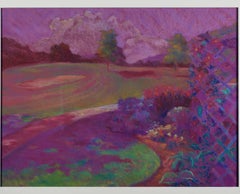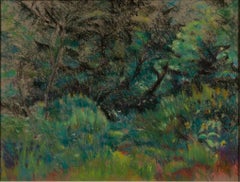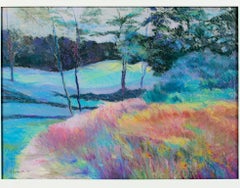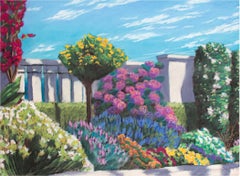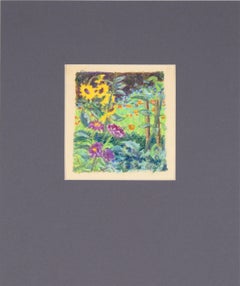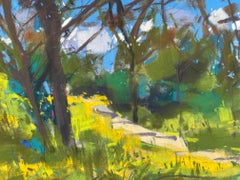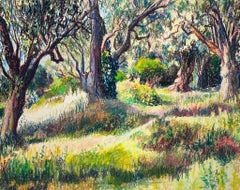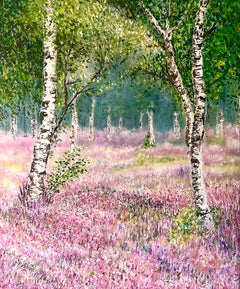Alicia CzechowskiContemporary female artist landscape pastel drawing flowers trees signed1997
1997
About the Item
- Creator:Alicia Czechowski (1945, American)
- Creation Year:1997
- Dimensions:Height: 24.5 in (62.23 cm)Width: 27.5 in (69.85 cm)
- Medium:
- Period:
- Condition:
- Gallery Location:Milwaukee, WI
- Reference Number:Seller: 10811g1stDibs: LU60532247523
Alicia Czechowski
Alicia Czechowski, notwithstanding an MFA in art from Wayne State University, is a self-taught artist, as most artists have been. As a child with a natural aptitude for drawing and a lust for sheer visual experience, she began drawing with whatever materials came to hand. Her drawing skills developed during her teens, keeping a sketchbook handy at all times with the result that she did thousands of impromptu studies from life of happenstance subjects that struck a chord, such as people and animals at rest and in motion, random objects, buildings, vistas and extempore imagined imagery.
Growing up in Detroit, Alicia Czechowski had ready access to the superb collection of the Detroit Institute of Arts. At the age of 10, she did her first copy of a painting, a still-life by Claesz, which she rendered on a much reduced scale in colored pencil, and then she did a somewhat more ambitious quarter-scale oil copy of “Trappers on the Missouri” by Bingham. Later, she did full-scale oil copies of paintings, or details of paintings, by Frans Hals, Rubens, Chardin, Gainsborough, Van Dyke, Velasquez, Fantin-Latour, Fragonard and G. D. Tiepolo in the National Gallery and The Metropolitan Museum of Art. Through copying works by these artists, Czechowski's aim was to imbibe something of the virtuosic fluidity and transcendent expressiveness of their handling of the painting medium.
“Being at work with your brushes and colors in front of a living, breathing painting by one of the greats, like Hals or Velasquez, is the most potent learning experience. It is the best way to learn to paint, almost like journeying back in time and actually watching them at work at their easels,” she says.
Alicia Czechowski's work is in private collections throughout the United States, in Mexico, Germany, the U.K. and Japan. She has had solo shows in New York City, Connecticut, Maine and Wisconsin, and has exhibited widely throughout the U.S. She did over 200 freelance illustrations for The New Yorker magazine from 1988 to 1995. Czechowski has taught painting, artistic anatomy, 3-D design and drawing at Wayne State University, Portland School of Art, University of Utah, Heartwood College of Art, and was Professor of Art at the University of Wisconsin-Milwaukee for five years. Her work is in the permanent collections of the Rahr-West Museum, Miller Art Museum and Haggerty Museum of Art.
- ShippingRetrieving quote...Shipping from: Milwaukee, WI
- Return Policy
More From This Seller
View All1990s Contemporary Landscape Drawings and Watercolors
Pastel
1990s Contemporary Landscape Drawings and Watercolors
Paper, Pastel
1990s Landscape Drawings and Watercolors
Pastel
1990s Landscape Drawings and Watercolors
Paper, Pastel
1990s Contemporary Landscape Drawings and Watercolors
Pastel, Pencil
1990s Contemporary Landscape Drawings and Watercolors
Paper, Pastel
You May Also Like
Late 20th Century Impressionist Landscape Drawings and Watercolors
Paper, Pastel
21st Century and Contemporary Abstract Landscape Paintings
Pastel
Mid-20th Century Impressionist Landscape Paintings
Pastel
2010s Contemporary Landscape Paintings
Canvas, Oil
Mid-20th Century Impressionist Landscape Paintings
Oil Pastel
2010s Impressionist Landscape Drawings and Watercolors
Paper, Color Pencil
